Kawika Lum-Nelmida and Marques Hanalei Marzan Forge Interconnection Across the Pacific
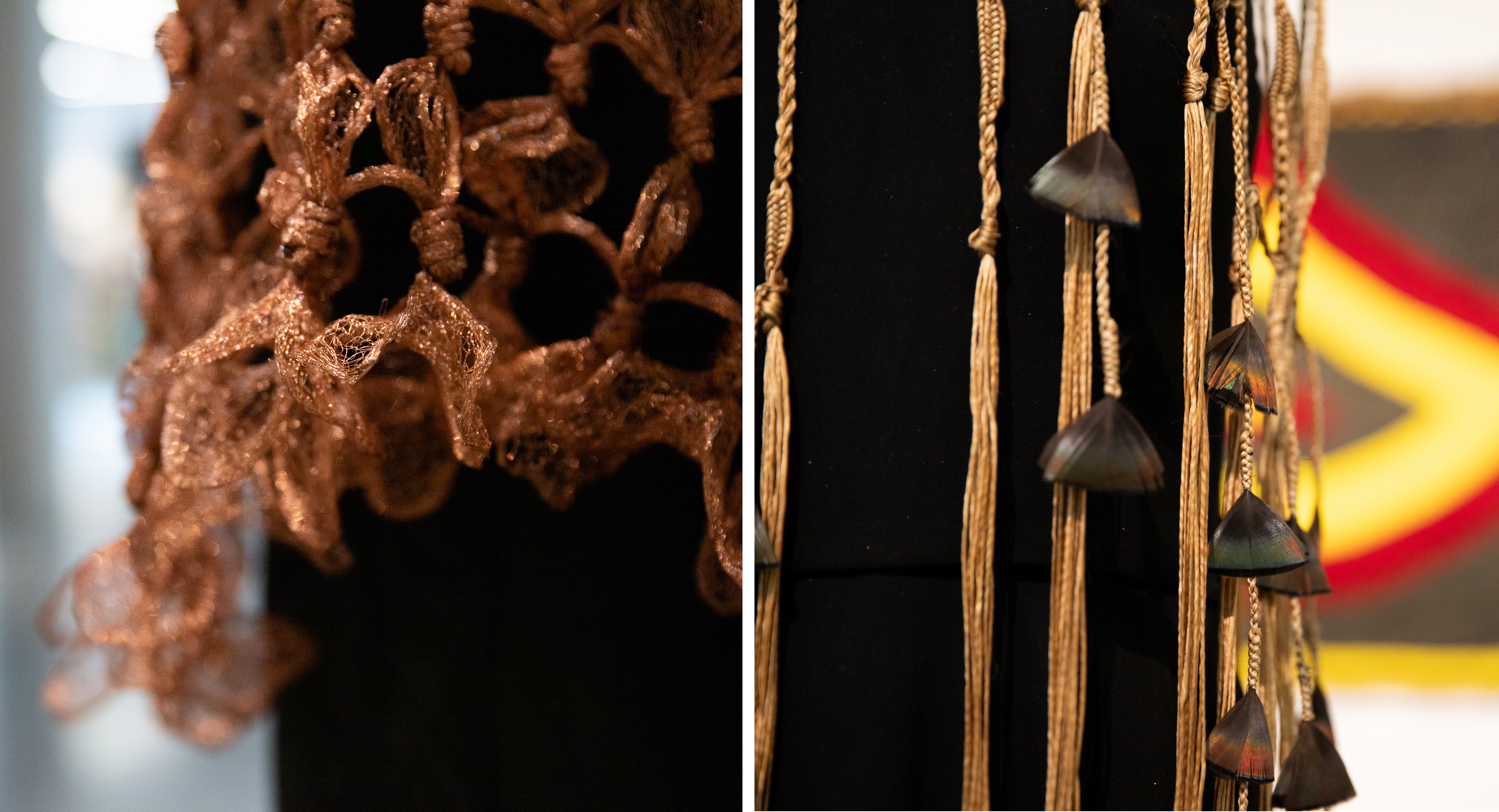
Details of works by Marques Hanalei Marzan (left) and Kawika Lum-Nelmida in the 2024 Low Residency MFA Thesis Exhibition at Emily Carr University. (Photos by Perrin Grauer)
Posted on | Updated
The Hawaiian artists and culture bearers continue to evolve their distinct, diverse material languages through the Low-Residency Master of Fine Arts program.
Kawika Lum-Nelmida and Marques Hanalei Marzan grew up on O‘ahu, part of Hawai’i’s verdant archipelago where, despite being dispersed across the seven inhabited islands amongst the state’s chain of 137, the community of Indigenous artists and culture bearers is tightly knit.
“In Hawai’i, our community of makers and cultural practitioners is not a large one, so we all really know each other well,” Kawika says, sitting across from Marques in the Aboriginal Gathering Place (AGP) at Emily Carr University of Art + Design (ECU).
This interconnection is deeply rooted in a sense of place and history, he continues. But a sustained, decades-long focus on cultural care and revitalization at home made both men curious to look outward.
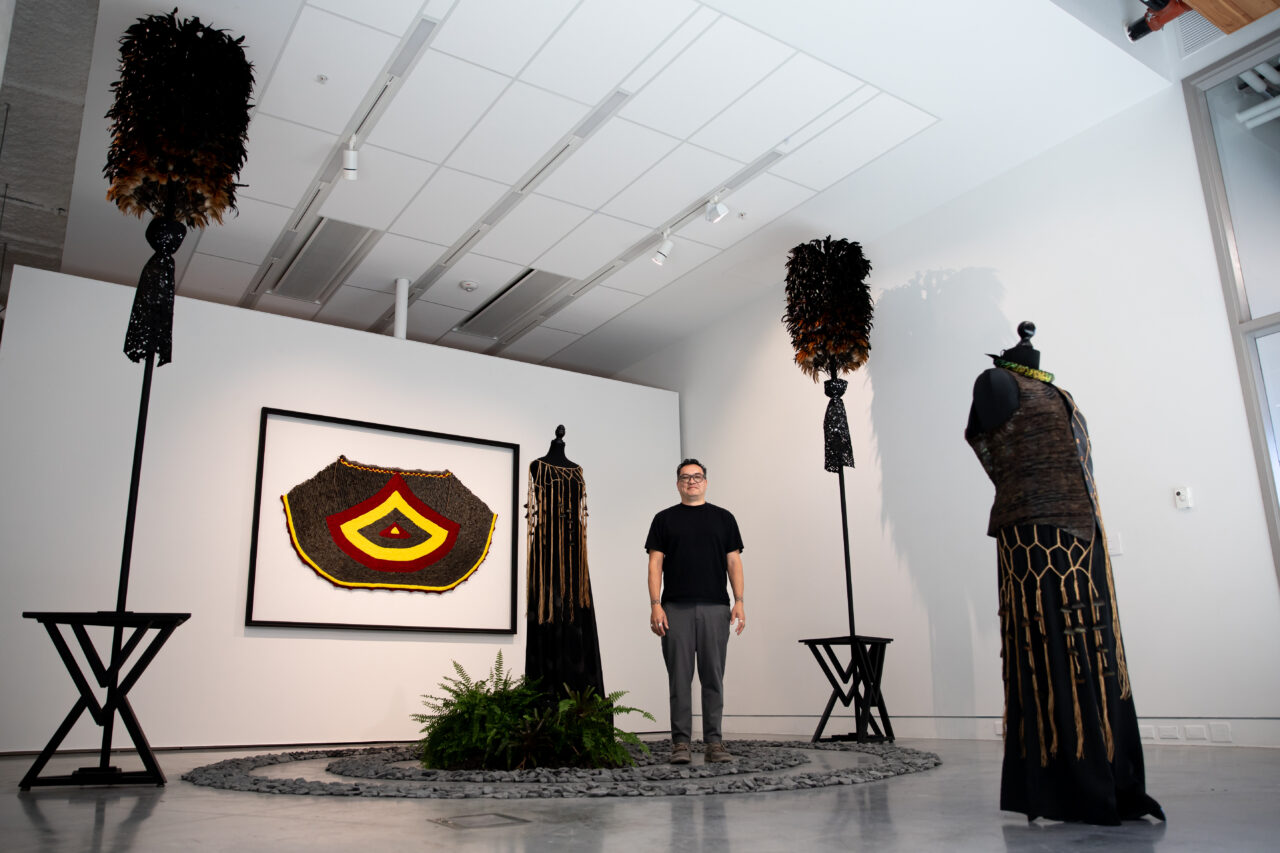

Kawika Lum-Nelmida (top) and Marques Hanalei Marzan (bottom) with their work in A Piece of the Sky, the 2024 Low-Residency MFA thesis exhibition at Emily Carr University. (Photos by Perrin Grauer)
A NEW LENS ON CULTURAL PRACTICE
For Marques, this meant regularly attending Indigenous artist gatherings abroad. At one such gathering in Aotearoa, New Zealand, in 2019, he connected with Brenda Crabtree, then the director of the AGP (since retired).
“When Brenda told me about the Low Residency Master of Fine Arts program and all the different possibilities at Emily Carr University and the AGP, I was intrigued,” he says. The program allows artists to undertake a master's degree remotely, gathering annually for in-person summer residencies at ECU. For Marques, the program emulated some of what makes Indigenous artist gatherings so valuable.
“Those gatherings have always been so inspiring for me — seeing established artists working alongside up-and-coming artists and students, uplifting and supporting and connecting people,” he says. “The program at ECU allowed me to have a long-term conversation that mirrored many aspects of what those gatherings mean for me. Getting two-years to have dialogue and collaborate with artists from around the world was a chance I wouldn’t have turned down for anything.”
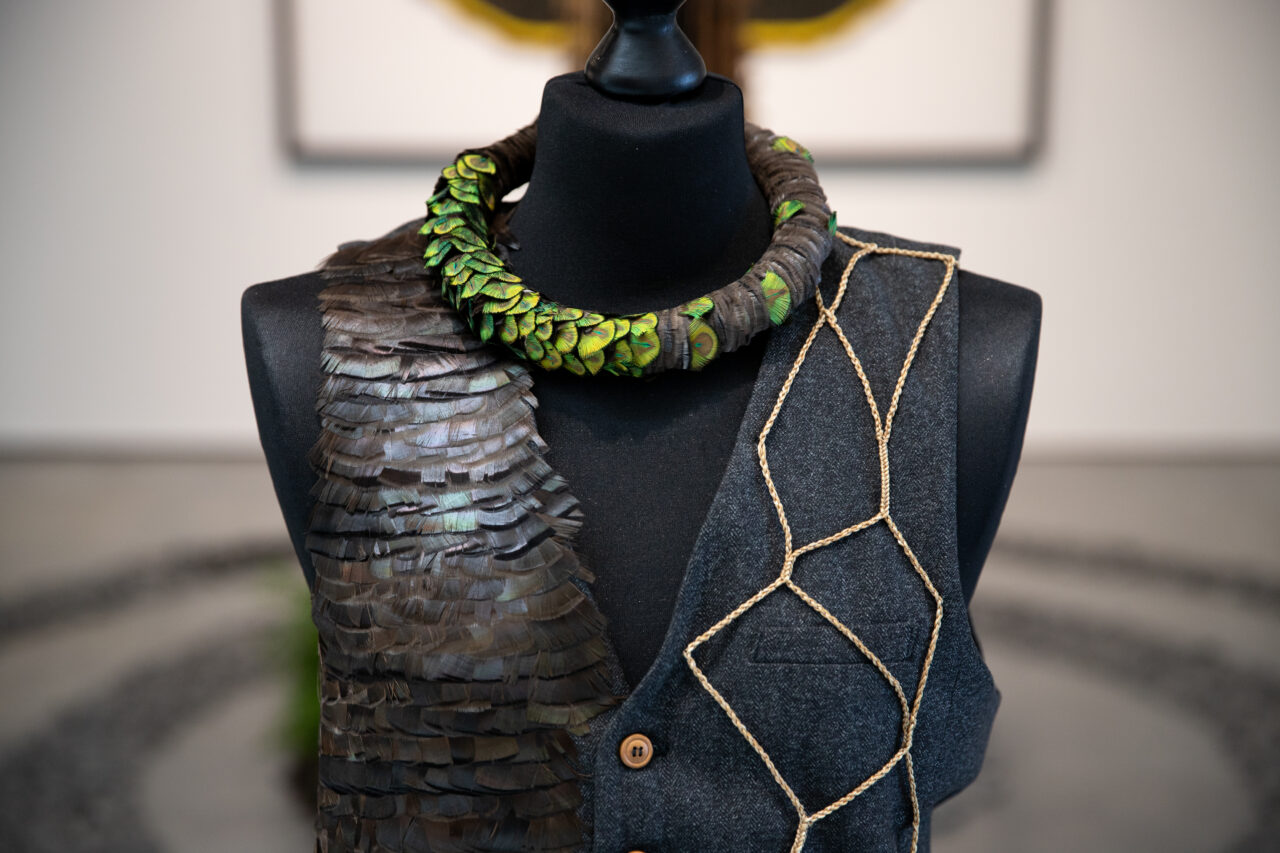
“I’m not creating fashion, I’m creating art on the body,” Kawika says of his work. (Photo by Perrin Grauer)
Just as importantly, the program offered the Hawaiian artists a chance to plumb broader, existential questions about what it means to take a creative practice beyond a community as committed and intimate as the one in which Kawika and Marques were nurtured.
“I studied under one master for over two decades,” Kawika says. “So how is an academic career different? That’s what I was starting to think about, and that’s what intrigued me to come here. How would it change my view on my cultural practice to see it through the lens of ‘art practice?’ I don’t know that there’s a definitive answer, this program has opened up ways for me to explore that question more deeply.”
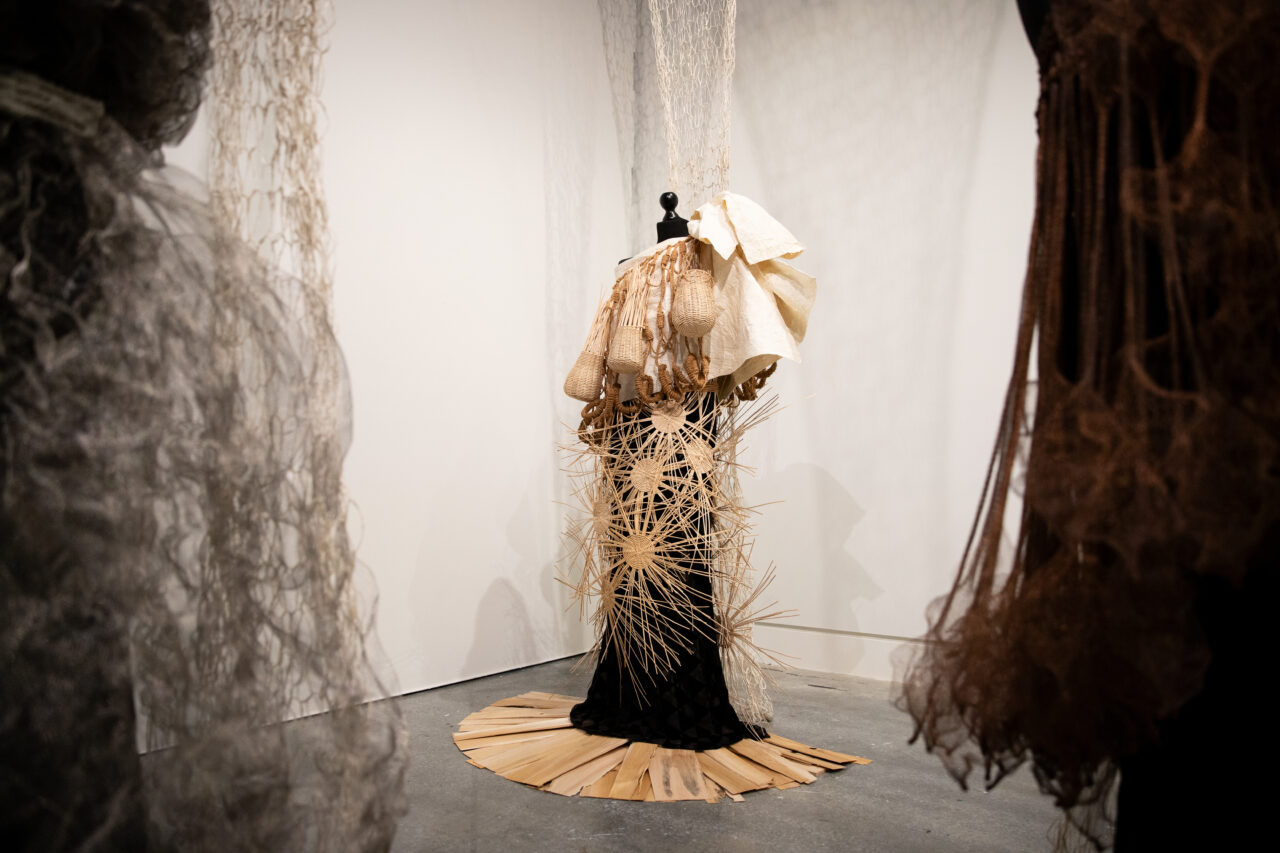
“Innovation and tradition are on a continuum. They’re not separate, standalone ideas,” says Marques of his community’s approach to material, technique and technology. (Photo by Perrin Grauer)
CARRYING RESPONSIBILITY AND CARE
Also at the forefront of Marques and Kawika’s minds was how studying abroad could benefit their home community. Both artists received United States Artist Fellowships that assisted with their studies. Both say they’re keen to see this produce meaningful support by way of knowledge-sharing with their peers in Hawai’i.
Dr. Mimi Gellman, an Anishinaabe Métis artist and Marques and Kawika’s graduate supervisor, suggests this inclination toward reciprocity is shared more broadly throughout the Indigenous student community at ECU.
“Like many of my Indigenous students, Marques and Kawika do their research-creation explorations to honour their cosmologies, their cultural and spiritual protocols, their mentor/teachers, their genealogies of making, and to bring forward, sustain and preserve their traditional knowledges and communities of practice,” Mimi says. “They do so because they love their lands, peoples, waters, and their plant, animal and flying relatives in the sky. They do this work for their ancestors, Elders, their students, and for those beautiful beings yet to come.”

The feathers used to create Kawika’s ‘ahu’ula (feather cape) are taken only from “food birds” such as chickens and turkeys, and are harvested without slaughtering the birds. (Photo by Perrin Grauer)
While the practices of both artists offer ample evidence of historical and cultural grounding, neither shies away from wide-ranging experimentation. Innovation, they note, is a matter of tradition in their culture.
“It’s absolutely possible to carry responsibility and care for what your ancestors taught while moving it in a new direction,” Kawika says.
“New materials or resources or technologies don’t require you to throw out your value systems,” Marques adds. “Innovation and tradition are on a continuum. They’re not separate, standalone ideas. They’re continuously touching.”
Mimi notes this viewpoint reflects the profound value of Indigenization.
“The gift of imparting Indigenous perspectives and methodologies is found in its ability to articulate and exemplify the unified nature of reality,” she says. “It offers strategies for thinking and perceiving that can lead us, Indigenous and non-Indigenous, to create inherently viable, integral and sustainable ways of being in the world.”
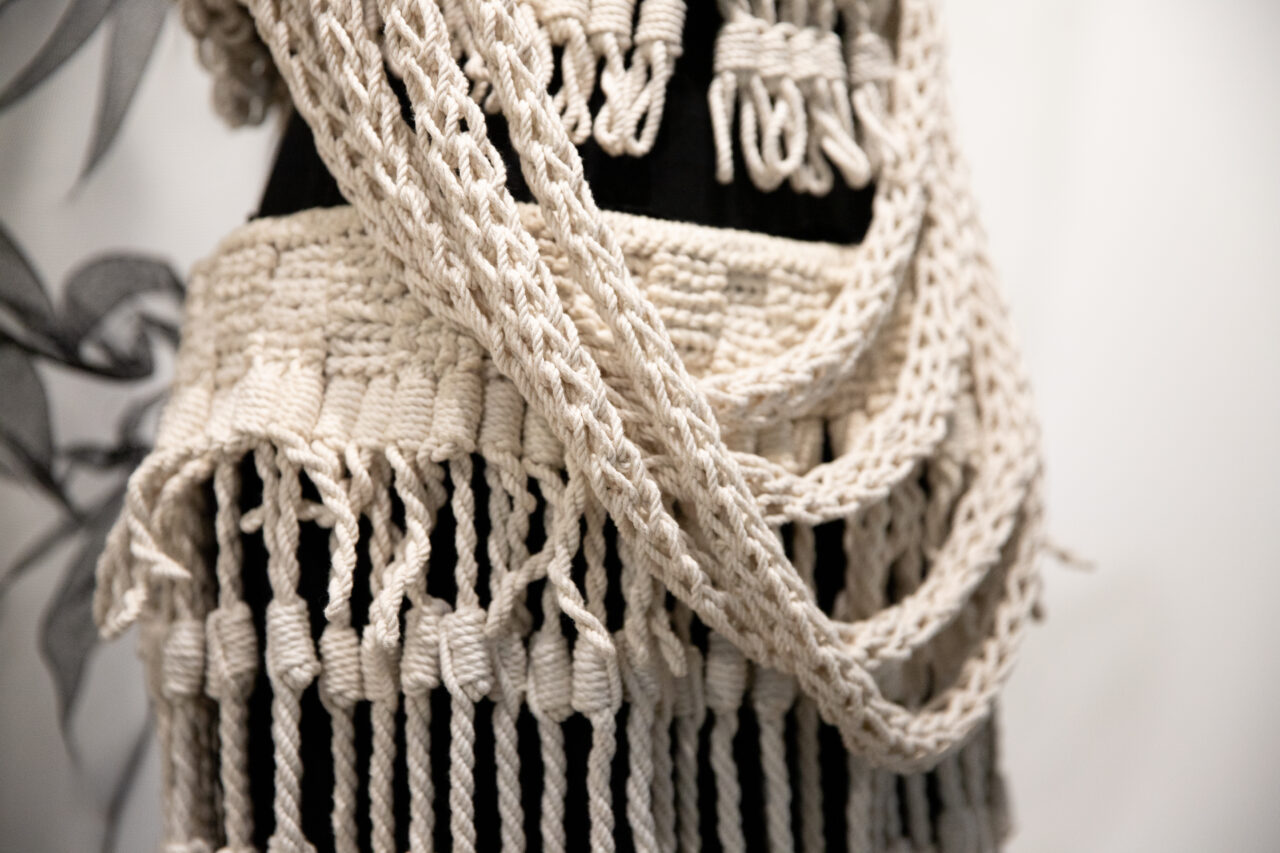
Marques’ expertise in techniques including plaiting, twining, netting and cord-making were learned under master practitioners on O‘ahu. (Photo by Perrin Grauer)
CREATING ART ON THE BODY
In A Piece of the Sky, the recent 2024 Low-Residency MFA thesis exhibition at ECU, Kawika and Marques deftly demonstrated this marrying of tradition and innovation. Marques, a fibre artist, and Kawika, a hulu (feather) artist, bring their distinct material languages to a kind of environmental haute couture.
Kawika’s shimmering featherwork — historically an artform reserved for royal garments — adorns clothing, an ‘ahu’ula (feather cape) and kāhili (feather standards). Meanwhile, feather-shaped slivers of animal hide — offcuts from drum-making workshops at the AGP — spin slowly on sinuous threads in the shimmery light of the university’s roof lanterns. Both installations are grounded in concentric or spiraling stone structures referencing designs found in ki‘i pohaku, or Hawaiian petroglyphs.
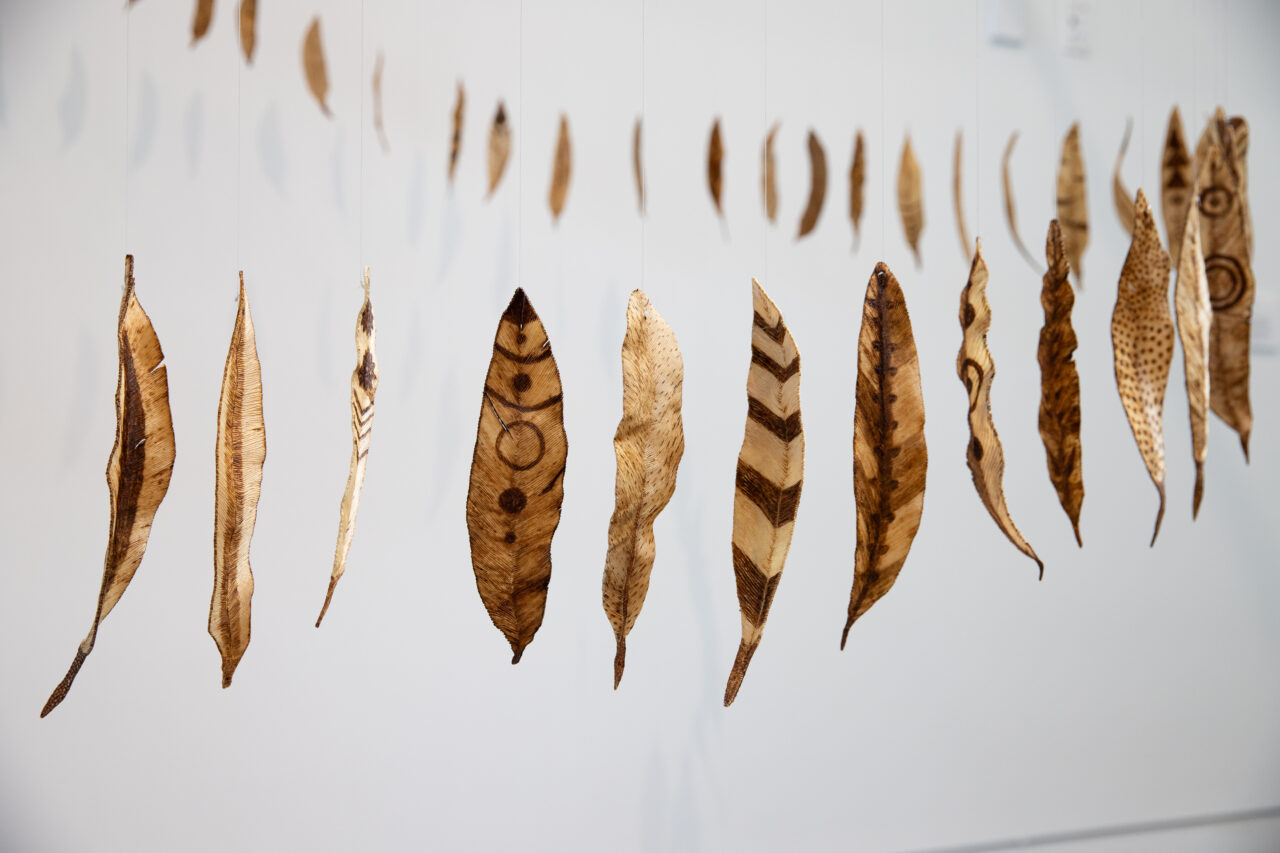
Feather-shaped slivers of animal hide created by Kawika Lum-Nelmida spin slowly on sinuous threads in the Low Residency MFA exhibition at ECU. (Photo by Perrin Grauer)
Marques’ eight garments employ multiple fibre-weaving techniques including plaiting, twining, netting and cord-making, all of which were learned under master practitioners on O‘ahu. Cascades of rope, net-like skeins, billowing volumes, woven vessels and elaborate knot-work enshroud a troupe of mannequins amidst a forest of towering textile scrims, each grounded by a pleated wooden form resembling a pe‘ahi (crescent-shaped fan).
While both artists have been lauded for their ability to combine traditional and contemporary practices, fashion was never a path either wished to pursue.
“For me, I’m not creating fashion, I’m creating art on the body,” Kawika says. “Both of us know, when we’re designing, exactly who’s going to wear a piece and how they’re going to wear it. There’s a spiritual component to who can hold the mana [energy] for that piece, who can join with it in a way that it will make it come alive.”
Marques adds that it’s only once an intended wearer dons a garment that the work is complete. “That’s the moment it fully comes to realization,” he says.
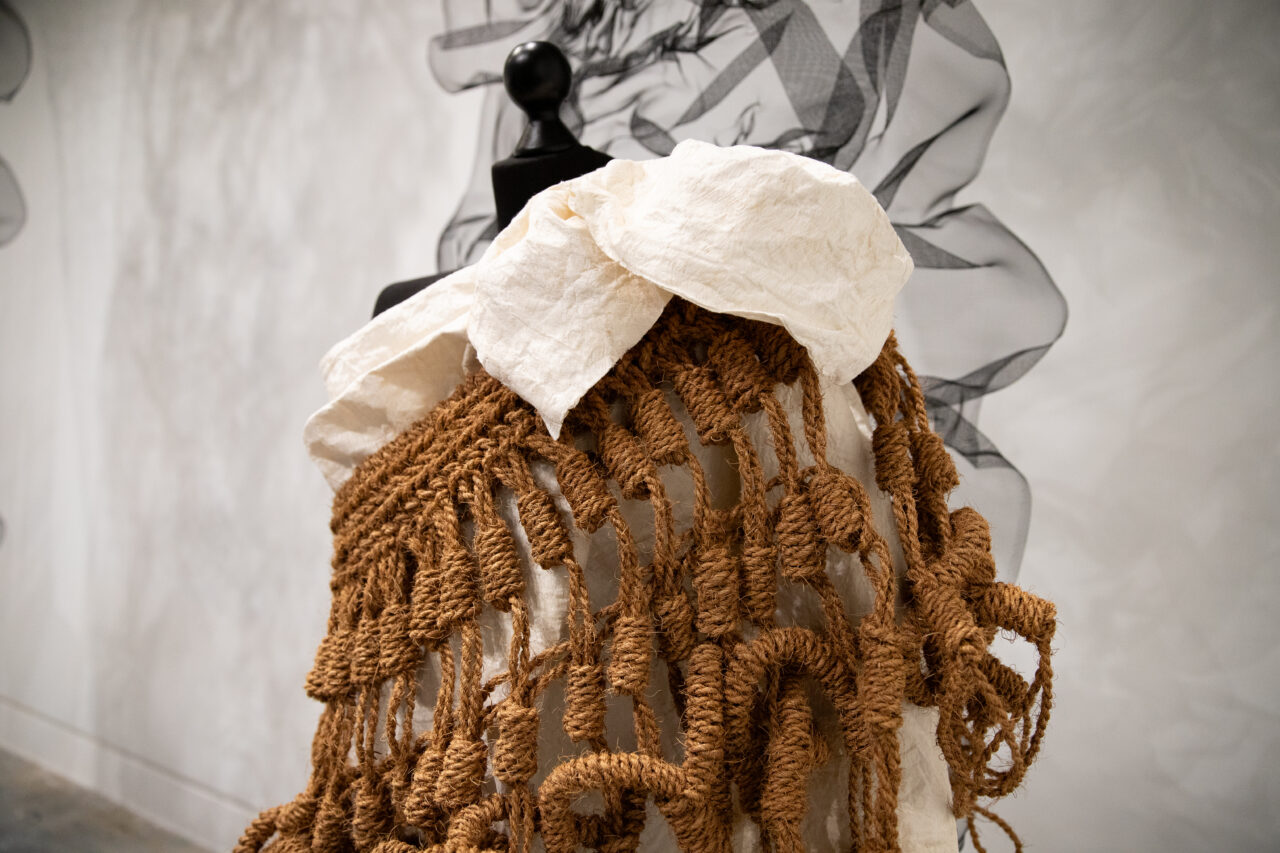
According to Marques, it’s only once an intended wearer dons a garment that a work “fully comes to realization.” (Photo by Perrin Grauer)
EVERY PERSON HAS THEIR OWN STORY
As they approach the end of their studies, Kawika and Marques say they hope to foster the close connections they’ve made with the other students in their cohort. In doing so, they hope to help enrich both their home community and those more distant ones they’ve encountered during their studies, just as they themselves feel enriched.
“We have this Hawaiian proverb: ‘a‘ohe pau ka ‘ike i ka halau ho‘okahi, not all knowledge comes from one school. All these different ways of understanding should be recognized and acknowledged as important,” he says. “Every person has their own story they bring to how they engage with places, communities or spaces. It’s been really inspiring to have access to those thought processes.”
Follow Kawika and Marques on Instagram to keep up with their work.
Visit ECU online to learn more about studying in the Master of Fine Arts program at Emily Carr.